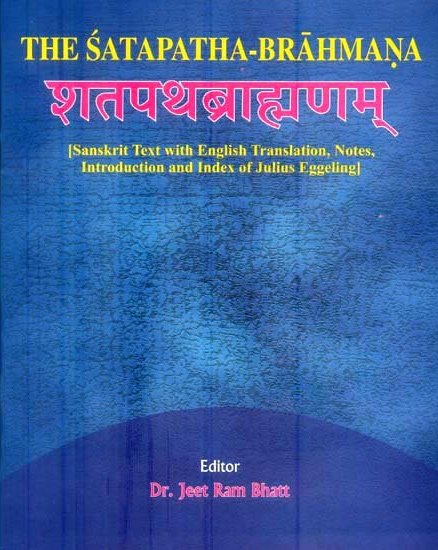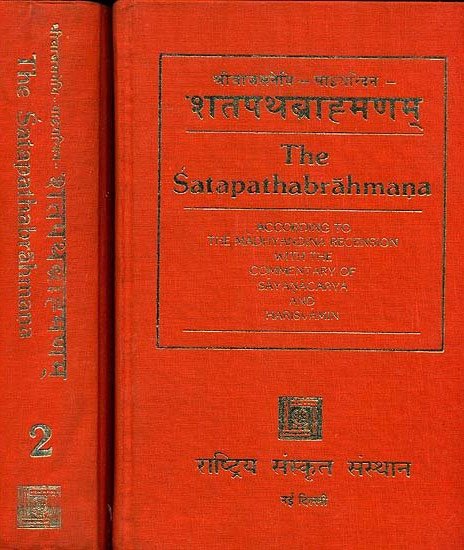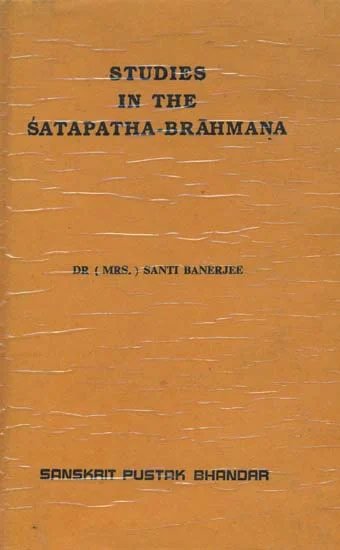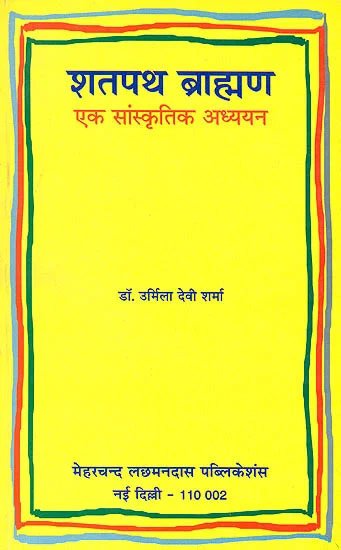Satapatha-brahmana [sanskrit]
147,532 words | ISBN-10: 812080113X | ISBN-13: 9788120801134
The Sanskrit text of the Satapatha-brahmana: One of the largest works in the category of Vedic (Brahmaic) literature, narrating in extensive detail the various rites, constructions, chants and utensils to be used in Hindu ceremonies. Alternative titles: Śatapathabrāhmaṇa (शतपथब्राह्मण), Śatapatha-brāhmaṇa (शतपथ-ब्राह्मण) Shatapathabrahma (shatapatha).
Verse 1.5.3.23
atha yathādevataṃ | svāhā devā ājyapā iti tatprayājānuyājāntsamasthāpayanprayājānuyājā vai devā ājyapā juṣāṇo agnirājyasya vetviti tadagniṃ sviṣṭakṛtaṃ samasthāpayannagnirhi sviṣṭakṛtsa eṣo'vyetarhi tathaiva yajñaṃ saṃtiṣṭate yathaivainaṃ devāḥ samasthāpayaṃstasmāduttame prayāje svāhāsvāheti yajati yāvanti havīṃṣi bhavanti vijitamevaitadanu sarvaṃ yajñaṃ saṃsthāpayati tasmādyadata ūrdhvaṃ viloma yajñe kriyeta na tadādriyeta saṃsthito me yajña iti ha vidyātsa haiṣa yajño yātayāmevāsa yathā vaṣaṭkṛtaṃ hutaṃ svāhākṛtaṃ
Preview of English translation:
23. And so with the (other) deities respectively. With 'Svaha the butter-drinking gods!' they established the fore-offerings and the after-offerings (anuyajas), for the fore-offerings and after-offerings, doubtless, represent the butter-drinking gods. With the formula 'May Agni graciously accept of the butter!' they established Agni as Svishtakrit [“maker of good offering”], for Agni is indeed the maker of good offering. And till this day that sacrifice stands as firm as the gods established it. This is the reason why at the last fore-offering he prays with Svaha! Svaha!' according to the number of oblations (there are at the chief sacrifice). After he (the sacrificer) has won his battle, he establishes the entire sacrifice on a firm basis, so that, if after this he should violate the proper order of the sacrifice, he need not heed it; for he will know that his sacrifice is firmly established. Now what with exclaiming 'Vashat,' with offering, and with calling out 'Svaha,' this same sacrifice was well-nigh exhausted.
For a detailled translation, including proper diacritics and footnotes, go the full English translation.
Other editions:
Also see the following editions of the Sanskrit text or (alternative) English translations of the Satapatha-brahmana Verse 1.5.3.23
The Satapatha Brahmana (In Five Volumes)
by Julius Eggeling (1882)
2551 pages; [Publisher: Motilal Banarsidass Publishers Pvt. Ltd.]
Buy now!
The Satapatha Brahmana (3 volumes)
by Dr Jeet Ram Bhatt (2009)
Sanskrit Text with English Translation; 1726 pages; [Publisher: Eastern Book Linkers]; ISBN: 9788178541693
Buy now!
The Satapatha Brahmana (With The Commentary of Sayanacarya and Harisvamin)
by Rashtriya Sanskrit Sansthan (2002)
3483 pages; [शतपथ ब्राह्मणम्] According to the Madhyandina Recension; Commetaries: (1) Vedarthaprakash (Vedartha-prakasha) by Shrimat-Trayibhashyakar Sayanacharya, (2) Sarvavidyanidhana Kavindracharya Saraswati.
Buy now!
Studies in the Satapatha-Brahmana
by Dr. (Mrs.) Santi Banerjee (1993)
236 pages; [Publisher: Sanskrit Pustak Bhandar]
Buy now!
Cultural Study of the Satapatha Brahman (in Hindi)
by Dr. Urmila Devi Sharma (1982)
106 pages; Shatapatha Brahmana Ek Sanskritik Adhyan; [Publisher: Meharchand Lakshmandas Publications]
Buy now!![Satapatha-brahmana [sanskrit] - book cover](/uploads/a/NAC457-Satapatha-Brahmana.jpg)



